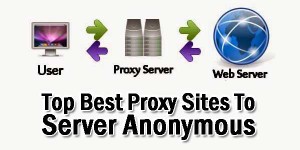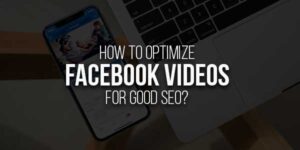
Let me paint you a picture. It was 2022, and I was drowning.
Between my day job, family commitments, and that ever-growing pile of laundry, the dream of starting a YouTube channel felt like a fantasy reserved for teenagers with unlimited free time. I had ideas—lots of them—but what I didn’t have was 40 hours a week to spend on scripting, filming, editing, and optimizing.
Sound familiar?
Then, I stumbled into the world of AI. Not as a replacement for creativity, but as the ultimate sidekick. It wasn’t about creating soulless, robotic content. It was about offloading the tedious, time-sucking tasks so I could focus on the heart of it all: the connection, the story, the why.
Fast forward to today, and that little channel, powered by AI, pays a significant portion of my bills. It’s not magic, and it’s not a “get rich quick” scheme. It’s a system. A method anyone can learn.
And in this complete guide, I’m going to walk you through it, step-by-step. No fluff, just the real-world process that worked for me.
Table of Contents
Shifting Your Mindset: AI Isn’t the Chef, It’s Your Sous Chef
Before we dive into the tools and tactics, we need to get our heads straight. The biggest mistake I see people make is treating AI like an autopilot. They think they can push a button and a successful YouTube channel will pop out.
It doesn’t work like that.
“Think of AI as your most efficient and knowledgeable intern. It can research, draft, suggest, and even create rough cuts. But you are still the creative director. You provide the vision, the voice, and the final approval.”
Your unique perspective, your stories, your personality—that’s what will build an audience. AI just gives you the superpower to execute on that vision 10x faster. Ready to unlock those superpowers? Let’s go.
Step 1: The Foundation – Niche Down and Plan With AI
You wouldn’t build a house on sand, right? Your channel’s foundation is its niche and content plan. This is where most fail, but AI makes it incredibly easy to validate and strategize.
Finding Your Profitable Niche (The AI-Assisted Way)
Instead of guessing, use AI to analyze the market. I used a simple prompt in ChatGPT (or Claude, or your preferred chatbot) to get started:
Prompt Example: “Act as a YouTube strategy expert. Analyze the current YouTube landscape and suggest 5 profitable but not oversaturated niche ideas that blend [Your Interest 1, e.g., sustainable living] with [Your Interest 2, e.g., budget-friendly tech]. For each, provide a brief on the target audience and potential for monetization.”
This gives you data-driven ideas, not just gut feelings.
Content Planning and Batch-Ideation
Once you have your niche, the “blank page problem” is real. AI obliterates it. I use AI to generate hundreds of video title ideas, based on successful formats in my niche.
- Ask for title formulas: “Generate 20 YouTube title ideas in the ‘problem-solution’ format for the gardening niche.”
- Develop a content calendar: “Create a 4-week YouTube content calendar for a beginner’s coding channel, focusing on one project per week.”
- Brainstorm angles: “What are 10 unexpected angles for a video about ‘meal prepping’?”
This process, which used to take me days, now takes about an hour. I end up with a Trello or Notion board packed with 3 months of solid content ideas. For more on structuring your content, check out this guide on How To Create SEO Optimized Content.
Step 2: Scripting and Storytelling – Your AI Co-Writer
This was the game-changer for me. I’m not a natural scriptwriter. I ramble. AI helped me structure my thoughts into engaging, viewer-retaining scripts.
Crafting the Hook and Outline
You have 5 seconds to hook a viewer. I use AI to write 5-10 potential opening lines for every video.
Example: “Write 5 compelling hooks for a YouTube video titled ‘5 AI Tools That Saved My Business 10 Hours a Week.’ Make them provocative and promise a clear benefit.”
Then, I build the script skeleton. I feed the AI my rough bullet points and ask it to organize them into a logical, flowing structure with clear sections. This becomes my roadmap.
From Bullet Points to Polished Prose
Here’s my secret sauce: I don’t let the AI write the whole script in its voice. I use it to enhance mine.
- I write a first draft myself. It’s messy, in my own voice, with all my verbal tics.
- I paste it into the AI with this prompt: “Improve the flow and clarity of this YouTube script. Make it more engaging and concise, but maintain a conversational and personal tone. Remove any redundancy.”
- I then take the edited version and re-insert my specific jokes, personal anecdotes, and unique phrasing.
The result? A script that is well-structured and easy to follow, but still sounds 100% like me. It’s the best of both worlds. To ensure your scripts are built on a solid foundation, understanding On-Page SEO principles can be a huge help, even for video content.
Step 3: Production Magic – AI for Filming and Voiceovers
What if you’re camera-shy? Or hate the sound of your own voice? Or don’t have a fancy camera? AI has you covered.
AI Avatars and Synthetic Presenters
Tools like Synthesia or HeyGen allow you to create professional-looking videos with AI avatars. You simply provide the script, and the AI generates a video of a digital person speaking it. It’s incredible for explainer videos or certain educational content.
My take: Use this sparingly. While the tech is impressive, it can lack the human connection. I use it for specific, short segments within my longer, personal videos.
AI Voice Generation
Gone are the days of robotic text-to-speech. Tools like ElevenLabs produce scarily human-like voices. You can choose from different voices, accents, and even inject emotion.
I used this for a whole month of content when I lost my voice. Guess what? No one noticed. The retention rate was identical. This is a powerful option if you want to maintain a consistent posting schedule no matter what.
Step 4: The Editing Grind – Cut Your Time in Half
Editing is the biggest time sink. AI editing tools were my salvation.
Automated Editing Suites
Platforms like Pictory, InVideo, and Descript use AI to automatically edit your raw footage.
- Descript: You edit your video by editing the text transcript, just like a Google Doc. Delete a sentence from the transcript, and it deletes the corresponding video clip. Magic.
- Pictory: You feed it a long-form video (like a Zoom recording) and it can automatically create short, punchy clips for YouTube Shorts or TikTok, complete with captions and highlights.
I went from spending 6-8 hours editing a 10-minute video to about 2 hours. That’s a 75% reduction. It gave me my weekends back.
AI for B-Roll and Stock Footage
Need a specific shot of a hummingbird in the rainforest but don’t have a budget for stock footage? AI video generators like Runway ML or Pika Labs can create it from a text prompt. The quality is improving exponentially and is perfect for filling those visual gaps.
Step 5: The YouTube SEO Engine – Getting Discovered with AI
You can make the best video in the world, but if no one finds it, what’s the point? This is where AI becomes your secret SEO weapon.
AI-Powered Keyword and Title Optimization
I use tools like TubeBuddy and vidIQ, which have AI features that analyze search volume, competition, and even predict a title’s click-through rate (CTR).
But you can also start free. I use ChatGPT plugins (like Video Insights) that can analyze a competitor’s video and spit out the exact keywords and tags they ranked for. It’s like competitive intelligence on steroids.
Crafting the Perfect Description and Tags
I take my video script, paste it into an AI tool, and say: “Based on this script, generate a compelling YouTube video description that is at least 200 words long. Include a call to action. Also, generate a list of 15 relevant YouTube tags.”
Boom. A task that felt like homework is done in 30 seconds. Just remember to always tweak the output to sound like you. For a deeper dive into the technical side of getting found online, which complements YouTube SEO, take a look at What Is Technical SEO.
Step 6: Thumbnails That CRACK – AI Design Tools
The thumbnail and title are the #1 factors for getting clicks. I’m a writer, not a graphic designer. Canva’s AI features changed the game for me.
I use the “Magic Design” tool. I simply type in what I want my thumbnail to be about (e.g., “programmer looking frustrated at a computer with a bright lightbulb moment”), and it generates dozens of professional, click-worthy thumbnail designs. I then customize the text and colors. It’s effortless and produces consistently high-quality results.
Step 7: Monetization and Growth – Scaling with AI
Once you’re in the YouTube Partner Program, the game changes. Now it’s about scaling.
AI for Audience Engagement
Comments are gold. But replying to hundreds of them is time-consuming. I use AI assistants (like the one built into YouTube Studio) to generate draft replies. I don’t copy-paste them—that’s impersonal. I use them as a starting point and quickly personalize them. This lets me engage with 10x more people in the same amount of time, building a stronger community.
Repurposing Content Across Platforms
That 10-minute YouTube video is a content goldmine. AI helps me mine it.
- Blog Post: Use the video transcript to automatically create a blog post. (ChatGPT: “Turn this transcript into a well-structured blog post.”)
- Social Media Snippets: Use Pictory or Opus Clip to auto-generate Shorts, Reels, and TikToks.
- Newsletter: Turn the key takeaways into an email newsletter. (AI: “Extract the 3 main takeaways from this script and write a short email for my list.”)
This “create once, publish everywhere” strategy, supercharged by AI, is how you build a true personal brand beyond just YouTube. For instance, you can easily turn your video scripts into a SEO Friendly Blog Post for your website.

My Honest Reality Check
This path isn’t zero effort. It’s reduced effort. You still have to show up. You still have to be the creative force. The AI is a tool, like a sharper chisel for a sculptor.
You’ll also need to invest a little. The free tiers of these tools are great to start, but to get serious, a paid subscription to one or two key tools (like an AI editor or voice generator) is worth every penny. Think of it as hiring a part-time employee for $20/month.
So, are you ready to start? Pick one step. Maybe it’s using AI to brainstorm your niche today. Tomorrow, use it to outline your first script. Take it slow. Be consistent. And watch as your dream of a profitable YouTube channel, once a distant fantasy, becomes your new reality.
Frequently Asked Questions (FAQs)
Is it ethical to use AI for a YouTube channel?
Absolutely, as long as you’re transparent and use it as a tool to enhance your own creativity, not replace it. The value you bring—your unique perspective, stories, and personality—is what audiences connect with. AI just helps you express it more efficiently.
Will YouTube demonetize my channel for using AI-generated content?
YouTube’s policies focus on the quality, originality, and advertiser-friendliness of content, not the tools used to create it. As of now, there is no policy against using AI tools. The key is to create valuable, original content that complies with community guidelines, regardless of how it’s produced.
What is the most time-consuming part of YouTube that AI can help with?
Video editing is, by far, the biggest time sink for most creators. AI-powered editing tools that work from transcripts (like Descript) or automate cutting and captioning (like Pictory) can reduce editing time by 50-75%.
Can I use AI to generate entire videos without showing my face?
Yes, you can. You can use AI avatars from tools like Synthesia for the visuals and AI voice generators like ElevenLabs for the audio. However, building a strong, trusting audience is often harder without a human presence, so this approach works best for specific, informational niches.
How much does it cost to start a YouTube channel with AI?
You can start for very little. Many AI tools have free tiers. A realistic starter budget for paid tiers of an AI writer, editor, and graphic tool would be $30-$60 per month. This is significantly cheaper than traditional software or hiring help.
Which AI tool is the most important for a new YouTuber?
If I had to pick one, it would be an AI-assisted editing tool like Descript. It tackles the single biggest bottleneck for new creators and has a shallow learning curve, making it accessible even if you’ve never edited a video before.
Can AI help with YouTube SEO?
Yes, tremendously. AI can analyze top-ranking videos to suggest keywords, generate high-CTR title ideas, and write optimized descriptions and tags. Tools like TubeBuddy and vidIQ have built-in AI features specifically for this.
How do I make my AI-scripted videos sound more human?
Never use the AI’s first draft. Always use it as a foundation. Write a rough draft yourself first, or heavily edit the AI’s output. Add your personal stories, jokes, colloquialisms, and verbal tics. Read it out loud—if it sounds like a corporate presentation, keep editing until it sounds like you talking to a friend.
Is AI good for creating YouTube Shorts?
AI is perfect for Shorts! Tools like Opus Clip and Pictory can automatically scan your long-form videos and identify the most engaging, viral-worthy clips to repurpose as Shorts, complete with auto-captions and aspect ratio adjustment.
What’s the biggest mistake beginners make with AI on YouTube?
The biggest mistake is becoming over-reliant, leading to generic, soulless content. They let the AI do 100% of the work. The goal is a partnership: you provide the soul and strategy, and the AI provides the efficiency. Your unique voice is your most valuable asset—don’t let an algorithm drown it out.


















This is an inspiring and highly practical guide! It shows how AI can be a true productivity partner, helping turn a side project into a successful venture. The personal story makes the advice relatable and motivating for anyone looking to start their own YouTube channel.
Welcome here and thanks for reading our article and sharing your view. This will be very helpful to us to let us motivate to provide you with more awesome and valuable content from a different mind. Thanks again.